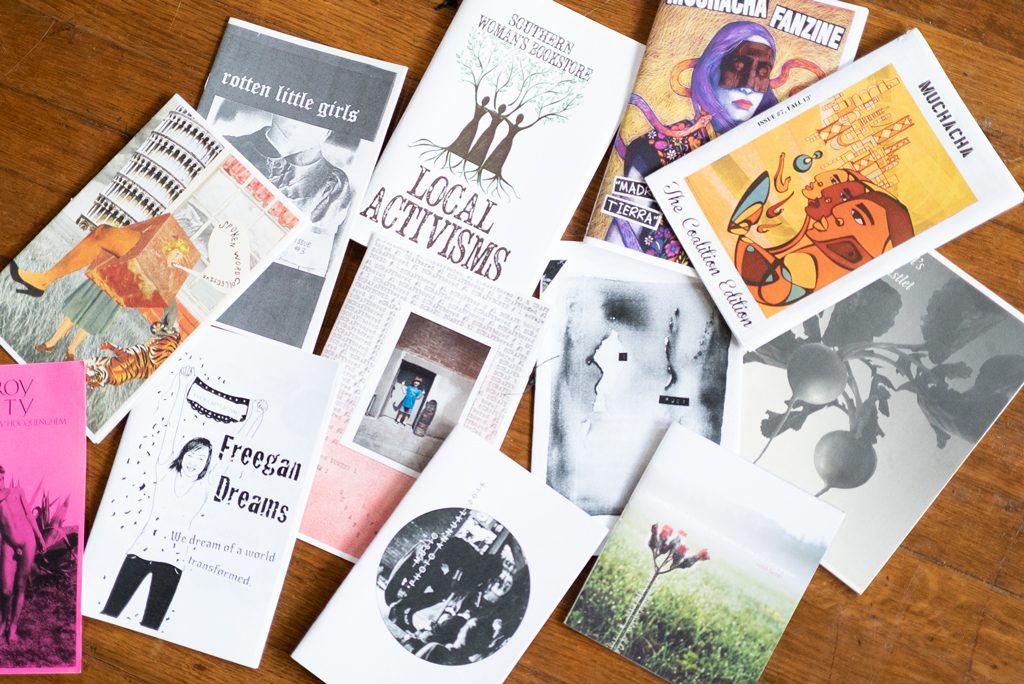Poetry with illustrations, tiny comic pages, art collages and food recipes sandwiched between political opinions. Self-distributed from your mom’s basement, underground press in your dad’s attic and unofficial fan conventions. Those are common characteristics of zine, a type of print that has been as long in the making as block prints have existed.
The word “zine” is derived from “magazine,” reflective of its format. Typically, zines are printed or photocopied by their authors or an independent press, their volume is not much thicker than your typical pamphlet. The construction of zines has stayed virtually the same throughout history — pieces of paper are stapled together into a small book. One popular form is an eight-page made from a single A4 piece, following a simple fold-cut-fold method. There is no barcode nor distribution channel — the author is usually the only person behind the circulation.
The content of zines is comparable to poetry, due to the shared idea of not having defining characteristics. They are mediums that are “hyper-personal.” Within this limited real estate, the audience is open to anything the author throws at them, from an unfiltered look at their interior to a ten-page sci-fi story. It’s helpful to think of them as one moment in an artist’s book, condensed yet still riveting.
Although zines have been around since the 1830s, their big break into dominant publication started in geek culture and punk movements. The first era of zines started in the 1940s, with mimeographs and cyanide-based printing techniques. A certain group of science-fiction writers, including Harlan Ellison and William Gibson, got their starts through making and distributing their own fan fiction, and then went on to become the biggest names in pop culture. These zines were distributed through fan conventions and mails, and a large number went to conventions solely to buy them. To that loosely tied-together fandom culture, zines served as the glue that held everything together — despite falling apart after a few weeks of readings themselves. It’s where you can trace the ideas that eventually grew into independent stories, where conversations between fans happened and where Fanworks got its platform before the days of blogs and message boards.
What about the punks and the Riot grrrl movement? Fast-forward to the 1970s, when punk music was still under the radar and unfavored by the mainstream music industry. Once again, self-published zines become one of the main outlets to advertise their music and spread political tracts. The punk community’s DIY mindset translated incredibly well into this medium, producing art collages, music reviews and political retorts. Although this generation of zine is still highly specific to its region, it marks the growth of several fanzines from amateur to national circulation monthlies, Crawdaddy and Creem being two of them.
In the late 1980s, the Riot grrrl movement evolved and distanced itself from the main punk scene due to sexism, incorporating second-wave feminism into its main messages. The movement’s origin can be traced back to band members of Bikini Kill, whose vision of a new movement took the form of an album called “Revolution Girl Style Now!” The album set the first brick in place for Riot grrrl. They were followed by Bratmobile members who coined the phrase “girl riot.” If the main punk subculture shifted zine’s content to a more politically charged nature, Riot grrrl is where a space in zine culture for marginalized voices that is permanently created and popularized.
Now, zine culture seems to be thriving once again, alongside the classic hipster vinyl. Its power of amplifying marginalized voices is stronger than ever, with thousands of artists collaborating and self-publishing. Most zines can be purchased online from the author’s sources, with both physical and digital copies available. Pop-up zine workshops and zinefests are resiliently making their way up. For the artist, it’s to tell a story. For the historians, it’s a rich source to find underrepresented narratives.



